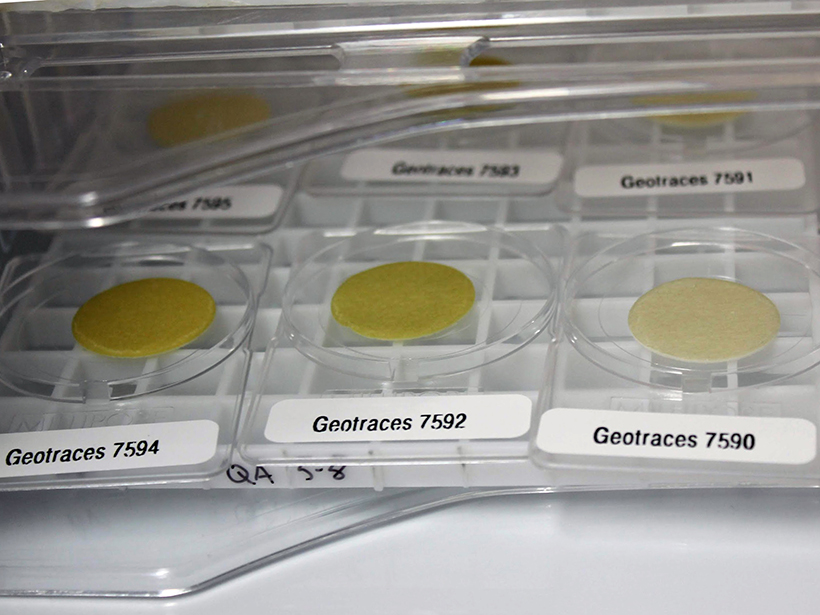Source: Global Biogeochemical Cycles
Although trace metals such as iron, copper, and zinc occur in only extremely low concentrations in the world’s oceans, they play an essential role in regulating photosynthesis and the global carbon cycle. But the difficulties inherent in measuring such minute concentrations, as well as the large uncertainties that exist regarding micronutrients’ sources and sinks—including their uptake and release from particulate phases—have made it challenging for scientists to quantify these complex biogeochemical cycles.
Now Ohnemus et al. present a novel conceptual framework for interpreting and understanding particulate trace metal data. Using extensive measurements of trace element distributions extracted from GEOTRACES biogeochemical data sets, the researchers show that simple statistical regressions—the conventional approach for modeling ocean particulate distributions—don’t accurately represent most trace metal cycles in the South Pacific and North Atlantic Oceans. They then demonstrate how alternative statistical techniques such as factor analysis, which allows scientists to examine biogeochemical processes that affect multiple trace elements at the same time, are much more effective at meaningfully interpreting large data sets.
The results indicate that although no two trace metals respond in the same way to the processes controlling their cycling, key processes such as biological uptake and remineralization do affect groups of trace elements in predictable ways. The factor analysis is especially successful at demonstrating shared associations, such as the increasing coaccumulation of copper, iron, and lanthanum with depth, as well as a concurrent accumulation of iron and nickel just below the South Pacific’s local oxygen minimum zone.
Collectively, these techniques paint a much clearer picture of how trace metals cycle through the world’s oceans and help illuminate the suite of interacting biogeochemical processes that affect multielement distributions. In the current era of burgeoning big data, these types of analyses are crucial for learning how to maximize the information that can be extracted from GEOTRACES and other large data sets. (Global Biogeochemical Cycles, https://doi.org/10.1029/2018GB006145, 2019)
—Terri Cook, Freelance Writer
Citation:
Cook, T. (2019), Big data help paint a new picture of trace element cycling, Eos, 100, https://doi.org/10.1029/2019EO124993. Published on 29 May 2019.
Text © 2019. The authors. CC BY-NC-ND 3.0
Except where otherwise noted, images are subject to copyright. Any reuse without express permission from the copyright owner is prohibited.

